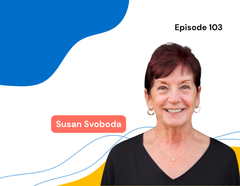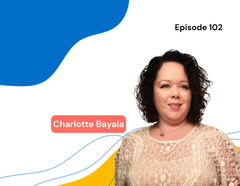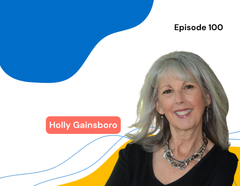How Movement Heals: A Cancer Exercise Specialist on Strength, Recovery, and Lymphedema
In this powerful episode of The Patient from Hell podcast, Samira Daswani sits down with Vicki, an exercise physiologist who has spent over a decade working with breast cancer patients—especially those recovering from surgery, living with metastatic disease, or navigating life after treatment. Their conversation is filled with practical advice, personal stories, and hope grounded in science and strength.
What kind of exercise should you do after a breast cancer diagnosis?
It's one of the most frequently asked questions by newly diagnosed patients—and Vicki has spent years answering it. Her answer? Start small, and think functionally.
Exercise isn’t just about fitness. It's about getting back to life. That could mean building enough strength to cook dinner again, or regaining balance and flexibility after surgery. “Functional fitness is where we begin,” Vicki explained. “We start with flexibility and then build back strength, especially in the core and upper body.”
Can you exercise during cancer treatment?
Yes—and doing so can lead to better outcomes. “Exercise during treatment helps you feel better physically and emotionally,” Vicki said. For those too fatigued for traditional workouts, she recommends gentle modifications: a countertop plank, stretching in bed, or using walking sticks to aid with balance. “Movement doesn't need to be perfect. It just needs to happen,” she emphasized.
How do you set fitness goals when you’re recovering from cancer?
Whether you’re in active treatment, rebuilding muscle post-chemo, or years into survivorship, Vicki encourages goal setting—but with compassion and personalization. “Some people want to snowboard again. Others just want to lift their grandkids or stand without pain,” she said. It’s not about performance. It’s about recovery that feels like you again.
For many patients, especially those who feel lost after treatment ends, this conversation helps reframe what “progress” looks like. It’s not always about miles or reps—it’s about agency.
How do you regain strength after cancer?
Vicki suggests starting with bodyweight exercises and building up slowly to resistance bands, weights, or strength training. “Your body is the dumbbell,” she quipped. Climbing stairs, modified planks, and squats are all ways to rebuild lean body mass, which in turn improves long-term health, energy, and weight management.
“Muscle is your engine,” she added. “The more you have, the more calories you burn—and the stronger you’ll feel.”
What’s the best way to manage weight after cancer?
Many survivors Google questions like: Why did I gain weight during chemo? or How do I lose weight after breast cancer? Vicki breaks it down clearly: cardio alone isn’t enough. Building lean muscle through strength training is key to boosting metabolism and overall health. “Don’t obsess over the scale,” she advised. “Muscle weighs more than fat. Focus on how your clothes fit and how your body feels.”
How can I exercise safely with lymphedema?
One of the most valuable parts of the episode is Vicki’s deep dive into lymphedema management. She explains that lymphedema—swelling caused by lymph node removal or damage—can be addressed with breathwork, compression sleeves, rebounders (mini trampolines), and KT tape, which she personally recommends for exercise because it’s breathable and doesn’t restrict movement.
For many listeners with limited access to reliable information about lymphedema, this episode offers both clarity and validation. Vicki and Samira discuss how the standard tan compression sleeves often feel like a visual reminder of illness—and how alternatives like LympheDIVAs or KT tape can empower patients during recovery.
What kind of exercise should metastatic breast cancer patients do?
This is one of the hardest—and most overlooked—questions in oncology care. Vicki answers it with grace. She shares a moving story of a patient who was wheelchair-bound from spinal metastases but made it her goal to snowboard again. A year later, she did. Five months after that, she passed away.
“It’s not about milestones. It’s about meaning,” Vicki said. “Helping someone use their body in a way that brings them joy—that’s the point.”
What if I’m too tired or scared to start?
Vicki encourages patients at every stage—from diagnosis to maintenance therapy—to start with what’s doable and build from there. “A 10-minute walk. A stretch on the floor. A countertop plank. That’s how it starts,” she said. “Give yourself grace—but don’t stay static.”
For patients searching online for How do I start exercising again after cancer? or Can I regain strength after chemo?, this episode is both a roadmap and a reminder that healing is deeply personal—and entirely possible.
Whether you’re navigating cancer treatment, rebuilding after surgery, or living with metastatic disease, movement matters. It reconnects you to your body, your confidence, and your goals. Vicki’s experience shows that fitness isn’t a luxury—it’s a tool for reclaiming your life.




